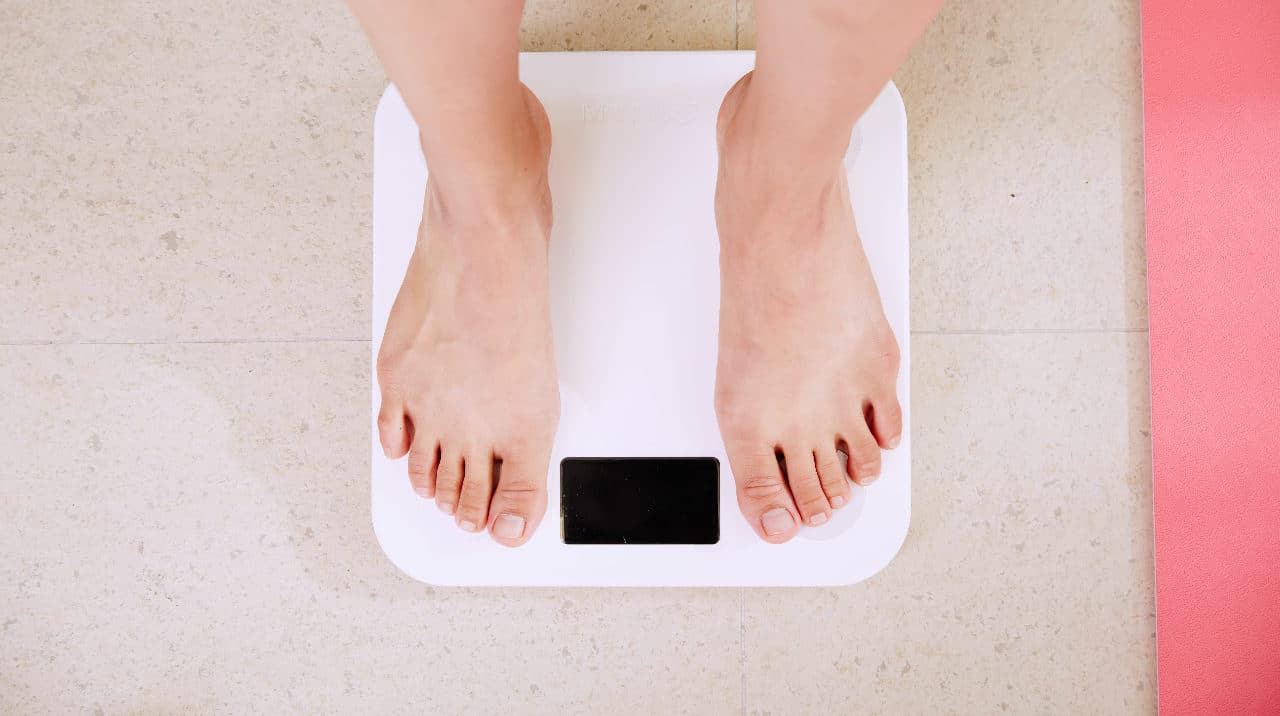Part III of III
This is the third part of our important series on the detrimental effects of hormonal birth control. For the first part, see all.org/petition-on-hormonal-contraceptives-the-real-effects-of-hormonal-birth-control. For the second part, see all.org/petition-on-hormonal-contraceptives-the-real-effects-of-hormonal-birth-control-2.
Body Mass
While studies have varied regarding weight increase in women who use COCs, the strongest data found that levonorgestrel-releasing IUDs do, in fact, affect body mass. The authors stated that “a significant increase in % fat mass with a corresponding decrease in % lean body mass was observed in both studies where these were measured.”
Women have found this side effect all too real. For example, a woman who wishes to be anonymous said:
When I was taking hormonal birth control (HBC) I underwent a massive weight gain. From 120 lbs. to 155 lbs. That’s almost adding 30% to my body weight! I also suffered with severe stomach cramping, constant discomfort, constipation and diarrhea. My doctor diagnosed it at IBS. I was only on HBC for 8 months and got pregnant while taking it. I stopped taking it upon pregnancy and have never touched the stuff again!
The authors believe that all patient-related materials and advertising (print, radio, etc.) should convey information about this risk to the consumer.

Urogenital (Urinary and Genital) Effects
The authors found evidence of several different kinds of urogenital problems in women. These include interstitial cystitis (a condition that causes bladder pain and pressure), bacterial infections, urinary tract infections, vulvovaginal candidiasis, vaginal dryness, female sexual dysfunction, and more. They state that the risk increases for adolescents and if the woman uses COCs for at least two years.
A woman who wishes to remain anonymous experienced a whole host of problems, including urogenital. She said:
I was put on birth control by my parents when I was only 15 years old after a sexual assault incident. I then continued it for another 5 years before I began to question it. In that time frame I experienced extreme weight gain and loss from one pill to another, was diagnosed with bipolar disorder because of my manic depression and severe mood swings (I am not bipolar), experienced a miscarriage, developed cysts in my breasts, had continuous pregnancy symptoms (including morning sickness every day), and had frequent UTIs and yeast infections. No one ever associated any of my problems, other than the breast cysts, to my birth control pills. It wasn’t until I discontinued the use once learning of the cysts that I began to feel normal and realized the association between my symptoms and the pill.
The authors believe that all patient-related materials and advertising (print, radio, etc.) should convey information about this risk to the consumer.
Venous Thromboembolism, Atherosclerosis, and Cardiovascular Events
Venous Thromboembolism
A venous thromboembolism (or VTE) is a condition in which a blood clot forms in a vein, most often in the leg, arm, or groin, and then lodges itself in the lung. This is an extremely dangerous health problem that can cause death. Even the American Heart Association website agrees that COCs can cause a VTE: “In women, pregnancy and the use of hormones like oral contraceptives or estrogen for menopause symptoms can also play a role.”
The comments regarding this side effect address the tragedies that have befallen women and families as a result of hormonal birth control. For example, Carol Pepin wrote about the loss of her daughter:
My 19-year-old daughter Shelby Pepin . . . died. Shelby was very athletic, did not smoke, and had no history of a blood disorder. The coroner’s report confirmed that Shelby had died from a pulmonary embolism. She had a DVT [deep vein thrombosis] behind her left knee that traveled to her lungs causing her bilateral embolism. The coroner also confirmed that her DVT was caused by her birth control the NuvaRing. Shelby had been on the NuvaRing for 18 months.
Joseph West has a similar story:
Our daughter died at age 29 in the Intensive Care Unit of her local hospital where she had been transferred after presenting herself at her local walk-in clinic. Her death was five weeks to the day after getting married and one day before [her] scheduled departure on a delayed honeymoon cruise. The autopsy report stated that she had “bilateral pulmonary thromboemboli” with a thrombus present in the left popliteal fossa. She had been using NuvaRing at the time of her death [which] had been removed at the walk-in clinic prior to transport to the hospital. . . . The [ICU] doctor stated that she believes that hormonal birth control was a significant contributor to the death of our daughter.
Kimberly Phipps-Nichol shared her personal story of survival:
Last year, at the age of 46, I was hospitalized with a cerebral thrombosis that was literally caught right before causing a stroke. The ER docs told me that if it had not been for the fact that the people I was with at the time of the event were trained to recognize the signs of stroke and called 911 for a stroke paramedic unit that arrived quickly, I would have been somewhere between a vegetative state and severely disabled. After countless CT scans and MRIs, along with a thorough study of my family history, the neurologist and hematologist teams determined it was the oral contraceptives that I was taking that had caused the thrombosis.
An anonymous family physician claims to have seen the negative side effects of contraceptives firsthand and tells of several cases, including her treatment of a young woman in her late 20s who went into a coma brought on by a pulmonary embolism. The only known risk factor was that this woman was taking hormonal birth control. In addition, a medical colleague of this doctor suffered a pulmonary embolism that was attributed to OCP.
Nancy Brockoff wrote to say that she had four friends, who were all young mothers, who died of blood clots related to hormonal birth control.
Atherosclerosis and Heart Disease
Atherosclerosis is a disease of the arteries caused by plaque. Arteries clogged with plaque lead to heart problems. Even as long ago as 1982, researchers understood and took interest in the fact that vascular disease and COCs were linked. According to the petition, these researchers “found that combination oral contraceptives (COCs) caused ‘greater cell proliferation and incorporation . . . in both human arterial smooth muscle cells and dermal fibroblasts.’ Smooth muscle cell proliferation is an integral feature of all atherosclerotic lesions (Bagdade 1982). In 2007, a presentation at the American Heart Association meeting described a study of 1,301 Belgian women, which showed that women had a 20 to 30 percent increase of plaque for every decade on COCs (Rietzschel 2007).”
Furthermore, the Danish Heart Association “released the results of a 15-year historic cohort study looking at thrombotic stroke and myocardial infarction, which observed over 1.6 million women. The results demonstrated that women taking COCs with ethinyl estradiol at a dose of 20 [micrograms] had a risk of arterial thrombosis that was 0.9 to 1.7 times higher than non-users, while those taking a dose of 30 to 40 [micrograms] had a 1.3 to 2.3 higher risk” (Lidegaard 2012).
The current black box warning about thrombotic events mentions smoking and age, which the authors believe misleads the consumer into thinking she’s safe if she doesn’t smoke or if she’s younger than 35. They want the warning amended to read: “Warning: Increased risk of serious cardiovascular events including blood clots.” Additionally, they request warnings on all advertising and patient-related materials.
Environment
The synthetic hormones that women take are continually released from their bodies through their waste products. When researchers noticed changes in the aquatic environment—especially in fish—they began conducting studies to determine the cause of these changes. What they found astounded them.
The Contraceptive Study Group explained:
EE2 [the synthetic estrogen ethinylestradiol] is metabolized in the liver undergoing first pass metabolism, but ~6% of the administered dose appears as untransformed EE2 in the urine and ~9% in the feces (Stanczyk 2013)….Even at low concentrations, these compounds can act as potent endocrine disruptors, affecting the growth, development, and reproduction of exposed aquatic organisms (Tyler 1998, Larsson 1999).
While wastewater treatment plants have the ability to filter out many chemicals and pollutants, they cannot filter out EE2.
Studies have found that these synthetic chemicals cause changes in male fish. A 1995 paper found that male fish in nearly 30 rivers throughout Britain had become “feminized” by these pollutants.
The Contraceptive Study Group also referenced a seven-year long study of the effects of EE2 on Canadian lakes. In that study, researchers approximated the amount of EE2 that would reach the waterways from a town of 200,000 people. They immediately saw the feminization and transgendering of male fish and a “near extinction” of the population of the fathead minnow there. Once the researchers stopped adding EE2 to the water, the population of minnows returned to normal.
We find further evidence in a study that looked at the fish populations near three Colorado sewage treatment plants. There, researchers found a significant difference between the fish upstream of the plant and those downstream. They stated:
The fish in the upstream locations enjoyed a balanced 1:1 female-to-male sex ratio. Downstream there were five female fish for every one male, and twenty percent of the reduced male population demonstrated intersex characteristics, such as eggs in their testes and the presence of vitellogenin, an egg yolk protein normally found only in fertile females. The consequences also appeared to ascend up the food chain in a measurable way, specifically with the feminization of trout, mink frogs and green frogs (Parke 2009). Both the predicted and the measured concentrations of EE2 in the US, including effluent of waste water treatment plants, surface water, or ground water, exceeds the predicted no-effect concentrations on fish populations (Kostich 2013).

Conclusion
In addition to these diseases and the pollution in the environment, the economic costs from these side effects and their resultant diseases/health problems to the patient and to the community are in the billions.
This article touched upon some of the most egregious side effects. To read the full list of side effects and the studies referenced, to read all of the comments, or to add your own comment, visit regulations.gov/document?D=FDA-2019-P-2289-0001.
This health crisis affects us all. Whether you are male or female, elderly, middle aged, young, a mother, or a father, hormonal birth control does affect your life in some way because these hormones affect your wives, your mothers, your sisters, your cousins, your best friends, the environment, and even your dinner table. It’s time to speak up and tell the government that women must know the truth. It’s time to help women understand that their health is more important than a drug that can alter their body and mind. Synthetic hormones and their deleterious effects leave a lasting impact and crush our society.
This article has been reprinted with permission and can be found at hli.org/2020/04/petition-on-hormonal-contraceptives.